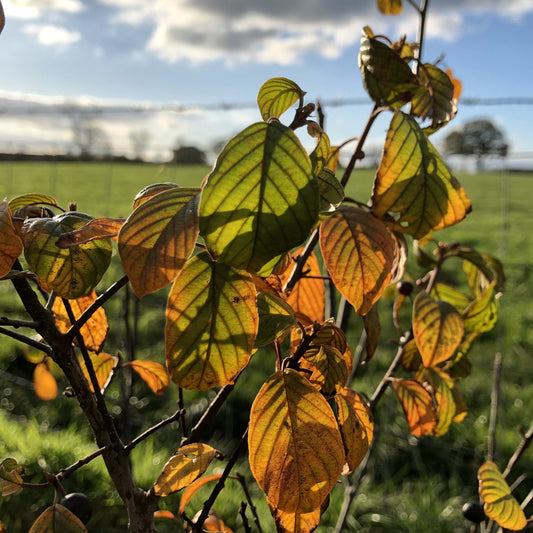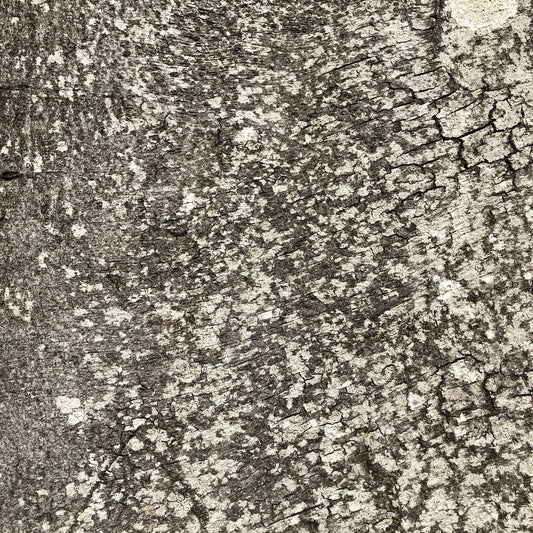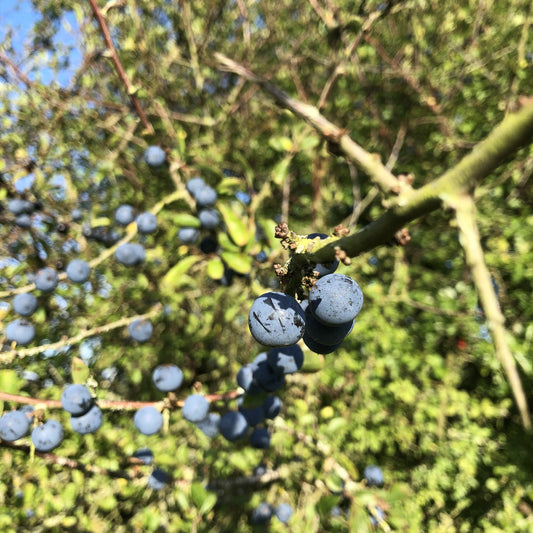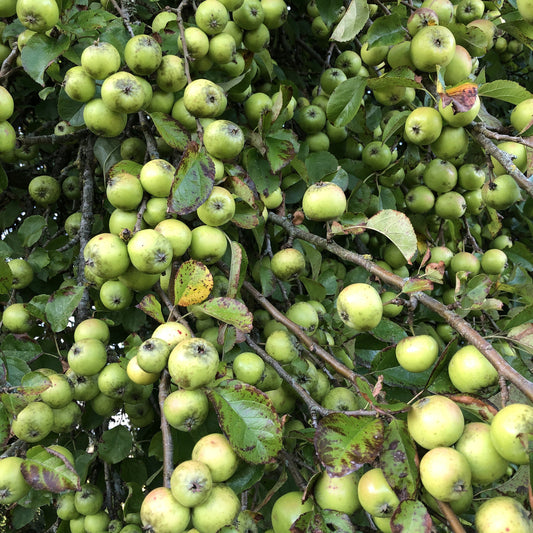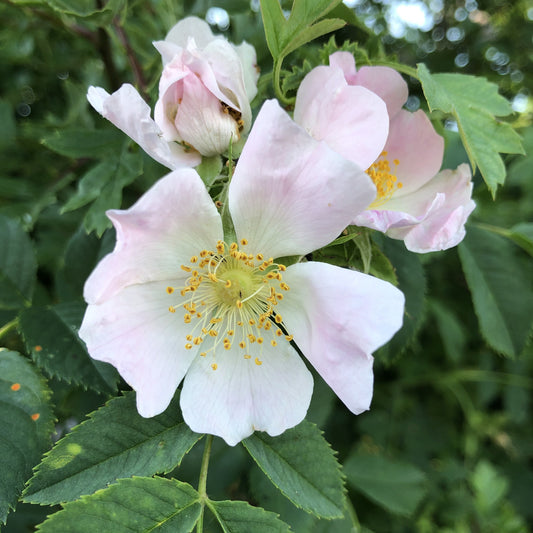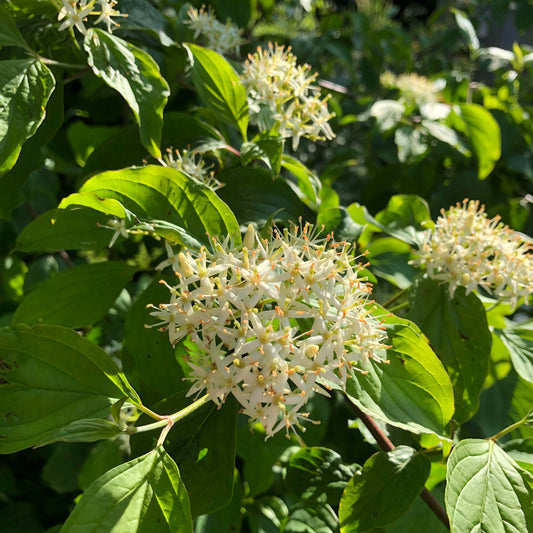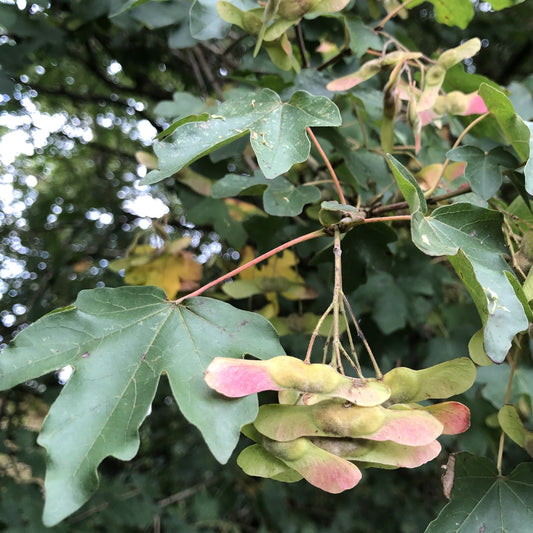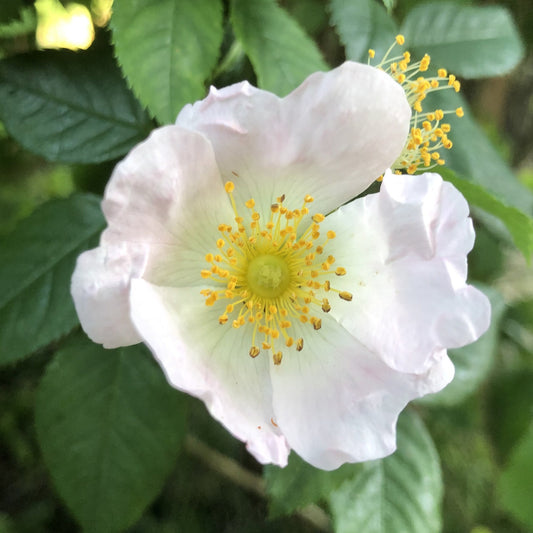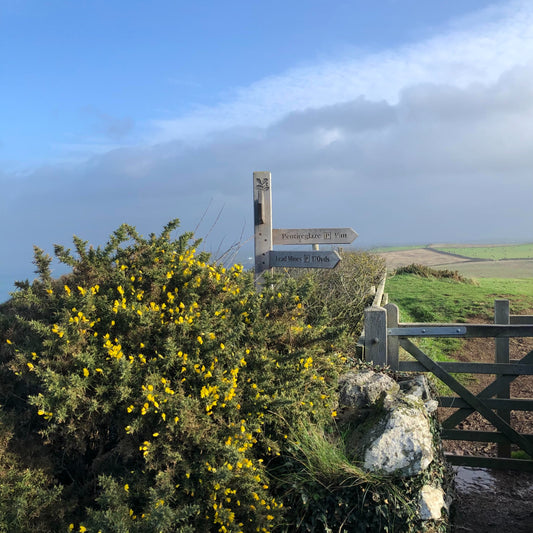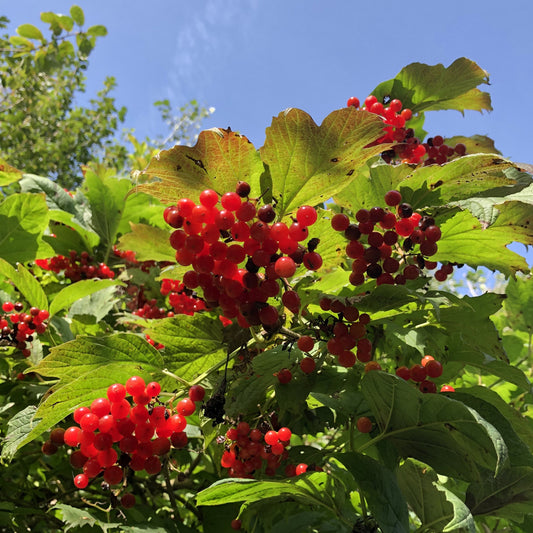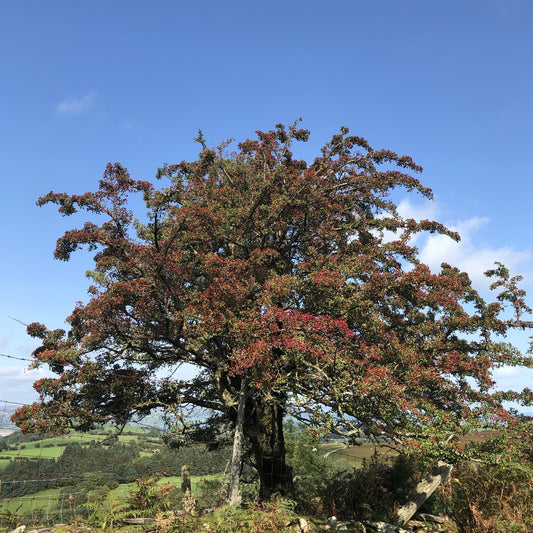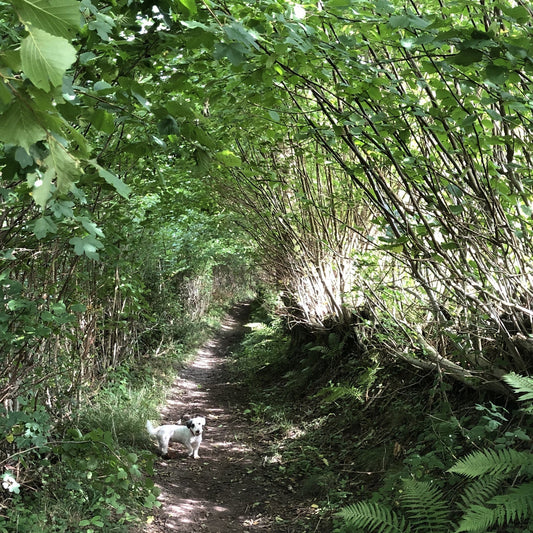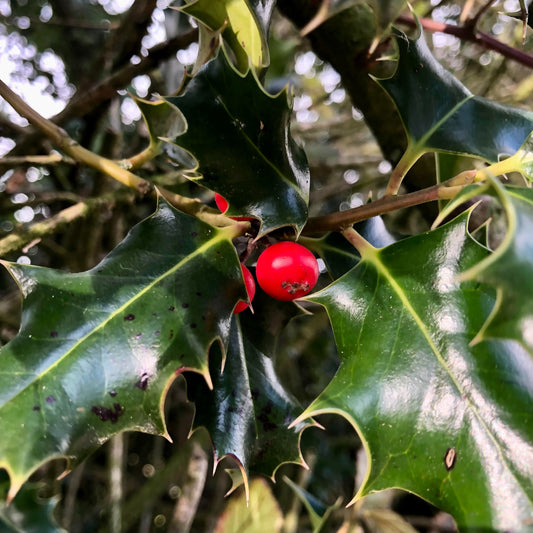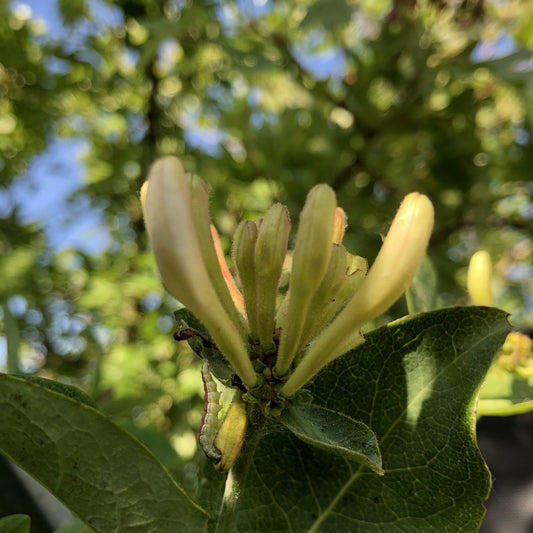Collection: Native Hedges
Our Hedge Plants For Sale
Planting a native hedge is one of the very best things you can do. Choose from our mixes, or design your own hedge! Our best selling mix is the Conservation mix, which will give you a traditional wildlife friendly stock proof hedge based on Hawthorn. If you don't want Blackthorn, which does sucker, then go for this mix. These species will grow in most conditions, including shady and north facing sites. All the mixes will be good to lay if required and give year round interest; blossom from March to midsummer, followed by lots of hedgerow fruit.
Please note that our plants are supplied as "bare root"; our native hedge plants are consequently only delivered from November - end March. They are usually supplied in 40-60cm or 60-90cm sizes. Depending on conditions, the 60-90cm plants will grow to around 2m height in 3 years. All these plants occur naturally in the UK and are all British grown from British stock - in other words, they have UK provenance and origin. They're pretty tough and pretty bombproof even for the novice, if you follow instructions.
All these hedge plants are lifted to order. They're not sitting around in a warehouse somewhere, so it might take a little while to get them to you depending in ground conditions. They need to be dormant before they're lifted, so if the beginning of November is warm that will put delivery back too.
In addition to the resources below you'll also find lots of helpful information in our FAQs.
What sort of hedge should I buy?
Let me guess... something fast growing, good for security and privacy, attractive and wildlife friendly?
Our native hedge plants can be all that. They typically grow fast. One of Hawthorn's other names - "Quickthorn" - gives you a clue. It's no coincidence that this was - and continues to be - the nation's favourite native hedge plant from time immemorial. Mixed country hedges are stockproof, which means they're also people proof. If they can keep cows in they can keep unwelcome visitors out! Any selection including spiky species like Hawthorn, Blackthorn and native roses makes for an impenetrable security hedge.
Mixed native species make good privacy hedges too; some are evergreen and others, like Beech and Hornbeam, hold their leaves over winter. They provide all year round interest and value, with attractive blossom and autumn colour. We're also seeing more people buying country hedges for urban sites to help reduce particulate pollution.
Our hedge plants provide a tasty hedgerow harvest for humans and other animals alike. From fresh spring leaves to the haws, berries and nuts of autumn, there's something for foragers and cooks, birds, mammals and invertebrates. If you like you can select plants to include as much hedgerow harvest as possible, or select our Edible or Kitchen hedge mixes.
Value For Wildlife
Properly maintained, traditional hedgerows provide a substitute for lost woodland edge habitat for a wide range of wildlife. The RSPB estimates they now support up to 80% of our woodland birds, which are enduring fierce population falls. Properly managed, hedges planted with native species are rich in flora and fauna, and have been an important natural resource in our countryside since the Bronze Age. They're a vast and important pantry for all sorts of animals, from caterpillars to small mammals. Not only do dense hedges provide shelter and food for wildlife, they are also "wildways" - corridors allowing safe movement. For wildlife - as well as biosecurity - native hedging is best sourced in the UK, grown from British plants or seed - like ours.
History
Max Hooper was a botanist who worked out that if you walked a 30m length of hedgerow and counted the species in it, multiplied that by 100 you would have a reasonable estimate for the age of the hedge. While it's obviously not foolproof I was staggered to discover we were surrounded by medieval hedges. It's not that unusual. There was steady "enclosure" of common land then, accelerated by the Inclosure Acts of the 18th and 19th centuries. All the hedges created were managed by an army of hedgers and ditchers in winter. It's an amazing thought nowdays.
Planting A Hedge
When buying whips reckon on 5 plants per linear metre for a stockproof hedge, planted in a double staggered row. A triple width hedge - a monster but sometimes done - would take 7 plants / metre. Rows are 50cm apart unless you want a looser "wildway" hedge. Most people use plant guards to prevent damage from rabbits in particular. These have only been available as photo-degradable until recently, which is a euphemism for breaking into small and smaller bits of plastic until you can't see them. If you use this type of guard please remove them after two or three years so they don't leave microplastic fragments in the soil. We are now offering biodegradable guards, which are a much better - if more expensive - option. We don't recommend using the woven plastic strips as as mulch; they're incredibly fiddly, don't biodegrade, and offer a perfect hideaway for a small army of voles to eat your new plant roots. It's very important to keep grass away from the young plants, however. Have a look at the resources below for more detailed guidance.
Hedges: Advice & Guides
What sort of hedge should I plant, and how should I do it?
Why and how to grow a native hedge
Annual hedge management
Managing your hedge for wildlife
Planting a native hedge (Video)
Our video guide on how to plant your new hedge whips
-
Alder Buckthorn (Frangula alnus)
Regular price £29.95Regular priceUnit price / per -
Beech (Fagus sylvatica)
Regular price From £22.00Regular priceUnit price / perBeech (Fagus sylvatica)
Regular price From £22.00Regular priceUnit price / perBeech (Fagus sylvatica)
Regular price From £22.00Regular priceUnit price / per -
Blackthorn (Prunus spinosa)
Regular price £19.50Regular priceUnit price / per -
Box (Buxus sempervirens)
Regular price £46.95Regular priceUnit price / per -
Crab Apple (Malus sylvestris)
Regular price From £5.95Regular priceUnit price / perCrab Apple (Malus sylvestris)
Regular price From £5.95Regular priceUnit price / perCrab Apple (Malus sylvestris)
Regular price From £5.95Regular priceUnit price / per -
Crack Willow (Salix fragilis)
Regular price From £20.95Regular priceUnit price / perCrack Willow (Salix fragilis)
Regular price From £20.95Regular priceUnit price / perCrack Willow (Salix fragilis)
Regular price From £20.95Regular priceUnit price / per -
Rose - Dog Rose (Rosa canina)
Regular price £13.95Regular priceUnit price / per -
Dogwood (Cornus sanguinea)
Regular price £20.95Regular priceUnit price / per -
Field Maple (Acer campestre)
Regular price From £6.95Regular priceUnit price / perField Maple (Acer campestre)
Regular price From £6.95Regular priceUnit price / perField Maple (Acer campestre)
Regular price From £6.95Regular priceUnit price / per -
Rose - Field Rose (Rosa arvensis)
Regular price £20.95Regular priceUnit price / per -
Gorse (Ulex europaeus)
Regular price From £15.95Regular priceUnit price / perGorse (Ulex europaeus)
Regular price From £15.95Regular priceUnit price / perGorse (Ulex europaeus)
Regular price From £15.95Regular priceUnit price / per -
Guelder Rose (Viburnum opulus)
Regular price £24.95Regular priceUnit price / per -
Hawthorn (Crataegus monogyna)
Regular price From £19.50Regular priceUnit price / perHawthorn (Crataegus monogyna)
Regular price From £19.50Regular priceUnit price / perHawthorn (Crataegus monogyna)
Regular price From £19.50Regular priceUnit price / per -
Hazel (Corylus avellana)
Regular price From £10.95Regular priceUnit price / perHazel (Corylus avellana)
Regular price From £10.95Regular priceUnit price / perHazel (Corylus avellana)
Regular price From £10.95Regular priceUnit price / per -
Holly (Ilex aquifolium)
Regular price £35.00Regular priceUnit price / per -
Honeysuckle (Lonicera periclymenum)
Regular price From £13.95Regular priceUnit price / perHoneysuckle (Lonicera periclymenum)
Regular price From £13.95Regular priceUnit price / perHoneysuckle (Lonicera periclymenum)
Regular price From £13.95Regular priceUnit price / per



